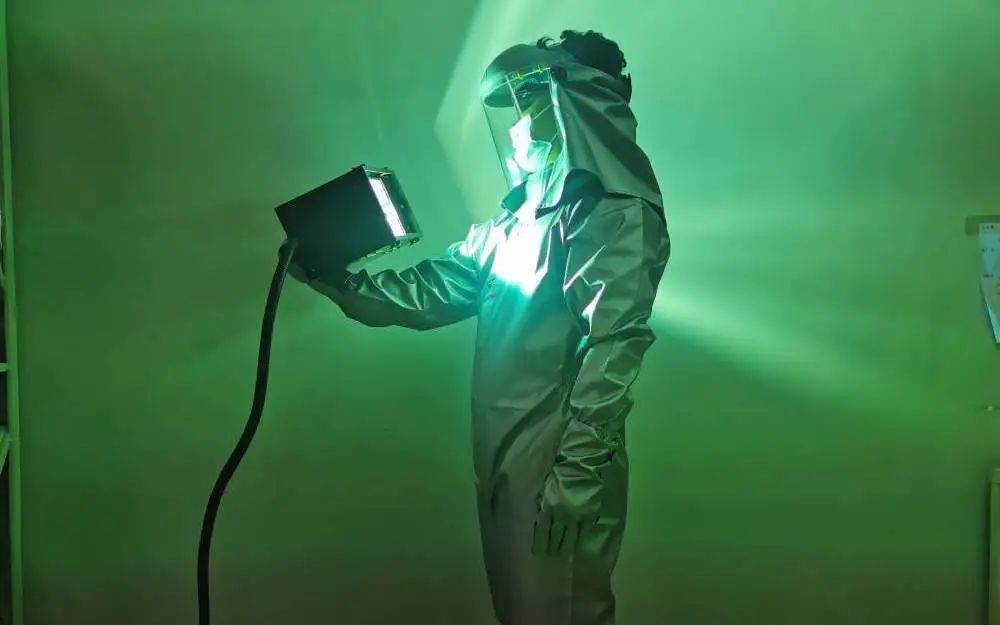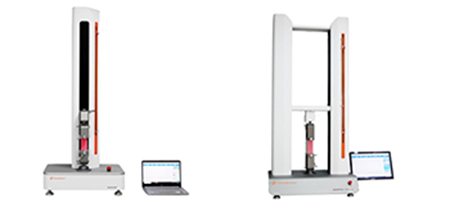Coated fabric: It is a kind of fabric treated by special technology. It can…
Industrial Textiles Application Guide
Table of Contents
★ What are industrial textiles?
Definition of industrial textiles: Textiles that are specially designed with specific functions and used in industry, medical and health care, environmental protection, geotechnical and construction, transportation, aerospace, new energy, agriculture, forestry and fishery, etc. Industrial textiles are also called: technical textiles, high-performance textiles, high-tech textiles, engineered textiles.

Industrial textiles are different from general textiles used for apparel and decoration, which are often used by professionals in a variety of performance-demanding or durable applications.
★ 9 main differences between industrial textiles and general textiles
1 Different fields of application and objects of use.
Industrial textiles belong to the field of production materials, while apparel and decorative textiles belong to the field of consumption. The purchase and use objects of apparel and decorative textiles are consumers, while the use objects of industrial textiles are usually not individual households.
2 Different appearance forms.
The appearance forms of industrial textiles are fiber form, cord structure, sheet form and three-dimensional form, while the appearance forms of apparel and decorative textiles are sheet form.
3 Different performance requirements.
The performance requirements of industrial textiles are higher than those of apparel and decorative textiles.
4 Different materials used.
Industrial textiles use a wider range of raw materials than apparel and decorative textiles, and will use a large number of special raw materials with high performance and high functionality, and the raw materials used have high strength, strong resistance to various external environments and excellent performance; the clothing and decorative textiles have lower requirements for physical and mechanical properties, but higher requirements for appearance and wearing comfort.
5 The processing methods and equipment used are different.
The materials used in industrial textiles are more rigid and difficult to process, due to the performance requirements, the processing methods and the equipment used are also different from those for apparel and decorative textiles.
6 Different processing of final products.
Most of the final products of industrial textiles have to be coated, laminated, or composited to make better use of the product characteristics and make up for the various defects of intermediate products.
7 Different test methods.
The testing of industrial textiles is difficult, and the laboratory cannot fully simulate the actual use, so the experimental results must have sufficient accuracy and reliability.
8 Different service life.
The service life of industrial textiles is much longer than that of apparel and decorative textiles, and fashion trends have no effect on the service life of technical textiles.
9 Difference price.
The price of technical textiles is higher than that of apparel or decorative textiles.
★ Processing technology for industrial textiles
The production of industrial textiles differs mainly according to the raw materials used and is generally subject to the following post-processing technologies.
1 Coating
Such as poncho material, synthetic leather, bonded lining cloth, linoleum, transportation belt, etc. It is a layer of polymer material or other materials covered on the textile, so that the product has both the function of the original textile and the function of the covering layer, such as waterproof and chemical erosion resistance, etc.
2 Laminated
Layer by layer lamination of sheet materials, bonded into one by pressure, forming a composite body with a variety of functions, such as laminated cement bags, medical cloth, waterproof and moisture-permeable raincoats, etc.
3 composite
Combining different materials together to form a material with a more complex structure, is a composite of a continuous phase with a dispersed phase, while coatings and laminations are also composites in a broad sense.
★ Uses and functions of industrial textiles
1 Textiles for medical and health care
Parts of the human body are often damaged or even crippled for various reasons, with the increasingly advanced level of medicine, artificial blood vessels, medical sutures, artificial skin, and even the invention of some artificial apparatus tube, are involved in the technology of functional medical textiles.
In addition, medical supplies for wounds, such as wound dressings, gauze, bandages, etc., requires excellent fluid absorption, blood absorption, hemostasis, non-toxic, and better healing function of the wound, more functional fibers, such as mulberry silk, chitin fiber, cotton fiber and viscose fiber.
Protective medical supplies, mainly surgical gowns and surgical towels, face masks, etc. The function is to improve the sanitary environment of the treatment area, prevent indirect infection and virus cross-infection caused by bacterial penetration, and improve the treatment effect. The protective effect, cost and comfort are the main factors of protective medical supplies.
2 Geosynthetic textiles
Geosynthetic textiles are highly vital new geotechnical materials that have been applied to all corners, mainly including geotextiles, geogrids, geomembranes, geotechnical liners, geotubes, geocomposites and other related geotechnical products.
The functions of geotextiles are isolation, reinforcement, filtration, drainage, impermeability, protection and so on. It should not only have good mechanical properties, but also be isotropic and homogeneous, and have good weather resistance, so most of them are made of polymer, and the most used are polypropylene and polyester raw materials, accounting for 80% of the total.
3 Textiles for construction
With the improvement of living standards, the demand for various construction materials, including waterproof materials, has greatly increased. Synthetic short fibers infiltrated within cement mortar can increase tensile and flexural strength and reduce dry shrinkage cracks. Construction textiles have a wide range of applications, mainly for building waterproof materials, membrane construction materials, fiber-reinforced plastics for reinforcement and repair, and cement fiber reinforcement materials.
4 Agricultural and marine textiles
Water-saving impermeable materials and drainage and irrigation systems, new materials in cultivation facilities, and disaster prevention materials are all agricultural textile materials. In addition to agricultural polyethylene film, agricultural cultivation materials mainly include cold yarn, agricultural non-woven fabric, etc. Cold yarn is made of chemical fiber woven fabric by resin finishing, it has two kinds of woven and knitted, raw materials are mostly used in staple yarn, monofilament, filament and compound yarn of vinylon, polyester, acrylic and ethylene.
The application of textile materials in the marine industry is multifaceted, not only for fishing nets, ropes and cables, and to diversify, high value-added development, such as the exploitation of marine deposits and oil, the use of tidal energy. The fibers of fishing nets should have strong dry and wet strength, resistance to repeated bending, minimum water absorption, low density, resistance to light, seawater, chemicals, solvents and antibacterial properties, commonly used nylon, polypropylene, polyester and ethylene, it has woven knotted nets, Raschel knotted nets, knotless nets, flat knotted nets and fine mesh nets.
5 Transportation textiles
Automobiles, trains, airplanes and ships need various textile interior materials, as well as reinforcement materials, belts, cord, etc. A car needs more than 40m2 of textiles, and in 2020, global car sales totaled 78.03 million units, and the value of automotive textiles is about $60 billion.
Among them, the non-woven fabric with its light weight, cheap, good performance and in the car decoration, lining, filling, filtration and other aspects of the widely used, mainly seat cushions, tufted carpets, roof and ground sound absorption, anti-vibration materials, etc.
6 Screen mesh textiles
Screen mesh fabric is mainly used for sieving solids, liquids, gases, etc., and therefore also known as filter textiles, using materials such as mulberry silk, synthetic fiber or metal wire, due to the use of different materials, there are silk screens, synthetic fiber wire screens, synthetic fiber wire screens and metal wire screens 4 major categories.
With the increasing degree of industrialization and high-tech technology, screen mesh in various fields of use more and more extensive, especially electronic technology increasingly to high precision development, electronic control components also to small development, and thus more than 700 mesh woven stainless steel metal screen as a small integrated circuit version is increasingly widespread, and has caused a boom in the development of countries.
In addition, it is also used for a variety of protective clothing, such as high-temperature flame retardant fabrics, chemical-resistant fabrics, radiation-resistant fabrics, electrostatic protective fabrics, anti-toxic fabrics; high-tech and military fabrics, such as aerospace fabrics (parachute, aerospace with load-resistant clothing, substitute clothing, anti-immersion clothing, astronautics clothing textiles), camouflage fabrics, etc.
★ Industrial Textiles Common Categories
Europe
Agricultural textiles; civil engineering textiles; construction textiles; environmental textiles; transportation textiles; technical textiles; protective textiles; medical and health textiles; functional clothing textiles; packaging textiles; sports and leisure textiles; other technical textiles.
USA
Agricultural textiles; textiles for building structures; textile structural composites; textiles for filtration; geotextiles; medical textiles; military defense textiles; paper machine textiles; safety and protection textiles; sports and recreation textiles; transportation textiles; other technical textiles.
China
Textiles for agricultural cultivation; textiles for fishery and aquaculture; geotextiles; skeleton materials for transmission, transfer, ventilation, etc.; canvas for canopy and tent; industrial tweeds, felts, mats, etc.; base fabrics for industrial threads, belts, ropes, cables, leather, felts, tiles, etc.; filter materials and screens; insulation materials and insulation materials; packaging materials; materials for various types of labor protection and protection; base fabrics for recreational and sports goods; and Medical and health care materials for women and children; textiles for national defense, aviation, aerospace and advanced industrial use; other types of technical textiles.
★ The role of industrial textiles in the future
1 Electronic information technology
Textile composite materials have many excellent properties, such as high strength, high specific stiffness, good fatigue resistance, good corrosion resistance, dimensional stability, low density, unique material designability, applied in the electronics industry, used as structural and structural functional parts, giving the product with light weight, high strength, high stiffness, high dimensional accuracy and other characteristics, improve the technical index of the product, better adapt to the development of modern high-tech requirements It improves the technical index of products and better meets the requirements of modern high-tech development.
2 Improving the quality of human life
Improving comfort: After special processing, flexible and rigid textile composites with light weight and high strength, sound and heat insulation, vibration and noise damping, etc., are exactly what is needed to improve comfort.
Improving safety: Flame-retardant, heat-insulating, anti-static, radiation-proof and toxin-proof textiles are used in many industrial fields of professional wear, and high-performance automobile seat belts and airbags, automobile bumpers and car floorboards all make use of the impact resistance and elasticity-response properties of textile composites.
Improving human health: With the freedom of material selection and the designability to combine the characteristics of multiple materials, composites are best suited for the manufacture of implantable artificial substitutes for bone repair and replacement.
3 Solving resource shortage and energy crisis
In the development of new energy sources and energy conservation: Including functional composite materials for photovoltaic cells, wind power generation devices, which can give full play to the advantages of its production process consuming less energy and being able to be shaped as a whole, making the means of delivery lighter and achieving the purpose of saving energy.
In the development of marine and space resources: With the characteristics of light weight, high strength and resistance to corrosion by various media, it has obvious advantages in the development of marine resources.
In extending the service life of infrastructure: High-performance fiber sheets are widely valued for use in repairing and patching damaged infrastructure, using carbon fiber/resin composites to repair damaged infrastructure.
4 Environmental protection
Applications in pollution control: geosynthetic materials for disposal of waste materials, filter materials for air purification and water purification.
Applications in waste utilization: composite materials made from waste are used for low-grade materials.
In the development of environmentally friendly materials: a batch of biodegradable is manufactured by composite method.




This Post Has 0 Comments